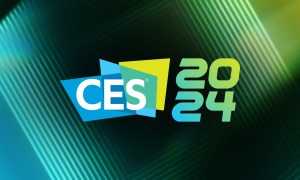
CES is more than just a neon-drenched show-and-tell session for the world’s biggest tech manufacturers. More and more, it’s also a place where companies showcase innovations that could truly make the world a better place — and at CES 2023, this type of tech was on full display. We saw everything from accessibility-minded PS5 controllers to pedal-powered smart desks. But of all the amazing innovations on display this year, these three impressed us the most:

Samsung’s Relumino Mode
Across the globe, roughly 300 million people suffer from moderate to severe vision loss, and generally speaking, most TVs don’t take that into account. So in an effort to make television more accessible and enjoyable for those millions of people suffering from impaired vision, Samsung is adding a new picture mode to many of its new TVs.
Relumino Mode, as it’s called, works by adding a bunch of different visual filters to the picture simultaneously. Outlines of people and objects on screen are highlighted, the contrast and brightness of the overall picture are cranked up, and extra sharpness is applied to everything. The resulting video would likely look strange to people with normal vision, but for folks with low vision, it should look clearer and closer to “normal” than it otherwise would.
Excitingly, since Relumino Mode is ultimately just a clever software trick, this technology could theoretically be pushed out via a software update and installed on millions of existing Samsung TVs — not just new and recently purchased ones.

Acapela Group’s My Own Voice
My Own Voice is basically audio deepfake technology that’s been streamlined, simplified, and reimagined as a tool to help people — specifically, people who might eventually lose the ability to speak due to illness or injury. Functionally speaking, the platform allows users to synthetically clone their voice and preserve the unique tone, timbre, and personality that makes it theirs — something that’s typically lost with most text-to-speech software (think Stephen Hawking, or the text-to-speech function on your MacBook).
The software can create an impressively realistic voice clone after hearing just 50 sentences of reference audio, which is a drop in the bucket compared to the massive data sets that are typically required to create a convincing voice clone. To be fair, this isn’t necessarily new technology, but it’s really exciting to see it applied to helping people — and not just to making novelty smartphone apps and silly YouTube overdub videos.

Samsung’s ‘Less Microfiber’ Technology
Microplastics are everywhere. They’re in our oceans, they’re in our food, and they’re even in our bodies. By some estimates, we consume about a credit card’s worth of plastic every few weeks — and a wide variety of studies have shown that all that plastic is screwing with both our bodies and the ecosystem at large. Samsung’s new Less Microfiber tech aims to help with that.

How? Well, One of the biggest sources of microplastics is our laundry. As we wash our clothing, tiny little pieces break away from synthetic fibers like polyester and nylon, then eventually make it down the drain and into our waterways. So in an effort to stop that process, Samsung has developed two technologies: a special wash cycle that requires less agitation and therefore creates less microfiber while you wash, as well as an inline filter that catches any fibers that make it through and pass into the drain hose. The coolest part, though, is that Samsung designed the filter to be compatible with any washer — not just the ones that it manufactures and sells.




